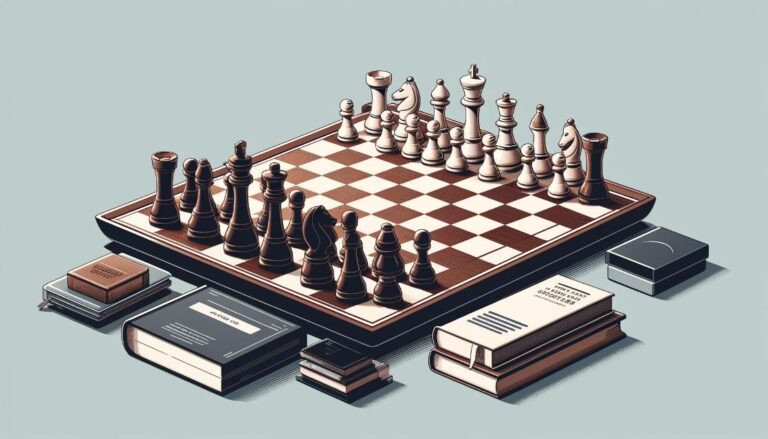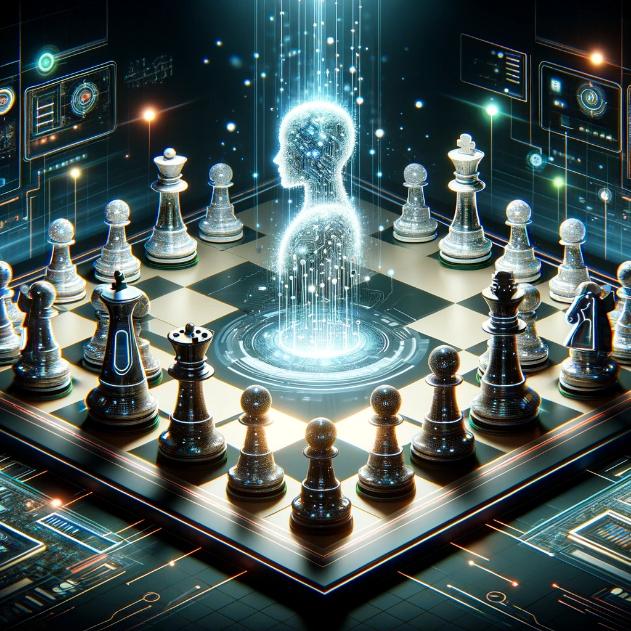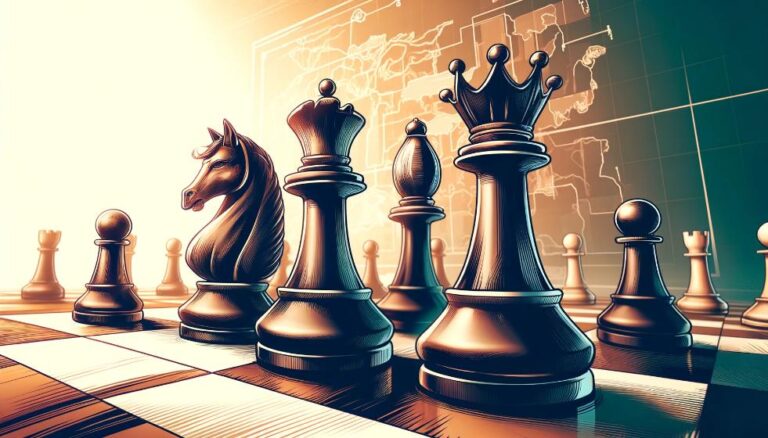Knight´s Tour Chess: A Classic Board Puzzle
Conclusion
The Knight´s Tour Chess is a classic board puzzle that has captivated the minds of mathematicians, computer scientists, and AI researchers for centuries. It remains a relevant and valuable puzzle in the field of AI, serving as a benchmark to test the capabilities of various algorithms and techniques. As technology continues to advance, the Knight´s Tour problem will continue to be an important reference point in the development of new AI strategies and solutions for complex problems.
Why is the Knight´s Tour Chess Relevant to AI?
The Knight´s Tour Chess problem has become a significant reference point in the field of Artificial Intelligence. It is widely used as a benchmark to test the abilities of various algorithms and strategies to solve complex problems. One of the earliest uses of the Knight´s Tour problem in AI was in 1950 when British logician Alan Turing used it to test the performance of a chess program for the Manchester Mark 1 computer.
In addition to its use in testing AI programs, the Knight´s Tour Chess problem has also been used in AI research to develop new algorithms and techniques for solving complex combinatorial problems. A famous example of this is the Warnsdorff´s Rule, named after the mathematician who discovered it. This rule is a heuristic algorithm, which means it uses a set of guidelines or rules to guide decision-making, rather than relying on exact calculations. The Warnsdorff´s Rule helps to reduce the search space for possible solutions, making it a faster and more efficient way to solve the Knight´s Tour problem.
The Knight´s Tour problem has also been used in the development of machine learning models, particularly in the field of Reinforcement Learning. This type of AI involves training a machine learning model to make decisions based on rewards and punishments, similar to how humans learn. Researchers have used the Knight´s Tour problem as a way to test and improve their reinforcement learning algorithms, with the ultimate goal of creating AI that can learn and solve complex problems on its own.
Solving Knight´s Tour Chess Today
While there are over 26 trillion different solutions to the Knight´s Tour on an 8×8 chessboard, finding a single solution that satisfies all the rules is still a challenging task. It is not feasible to brute-force through all the possibilities, as it would take an incredibly long time and require an enormous amount of computing power.
To solve the Knight´s Tour problem on larger chessboards, such as a 100×100 board, researchers have used the A* algorithm, a popular search algorithm commonly used in Artificial Intelligence. This algorithm uses a heuristic function to estimate the distance from the starting point to the end point, which helps in reducing the search space and finding a solution faster.
Another approach to solving the Knight´s Tour problem is using neural networks. Neural networks are computational models that imitate the way the human brain works, with layers of interconnected nodes that process information. Deep-Q network (DQN), a type of neural network, has been used to learn and successfully solve the Knight´s Tour problem on 8×8 and 10×10 chessboards.
With the advancement of AI technologies and algorithms, researchers continue to find new and improved ways to solve the Knight´s Tour problem. It serves as a challenging and relevant puzzle in the world of AI and pushes the boundaries of what machines can achieve.
Conclusion
The Knight´s Tour Chess is a classic board puzzle that has captivated the minds of mathematicians, computer scientists, and AI researchers for centuries. It remains a relevant and valuable puzzle in the field of AI, serving as a benchmark to test the capabilities of various algorithms and techniques. As technology continues to advance, the Knight´s Tour problem will continue to be an important reference point in the development of new AI strategies and solutions for complex problems.
History of the Knight´s Tour Chess
The history of the Knight´s Tour Chess can be traced back to as early as the 9th century, where it was mentioned in a chess book written by Al-Adli ar-Rumi. In the 18th century, a Swiss mathematician named Leonhard Euler studied the problem and was the first to provide a solution. In his solution, Euler found that the knight´s tour is not possible on an 8×8 chessboard starting from a corner square. It wasn´t until 1823 when a solution for the 8×8 chessboard starting from any square was discovered by H.C. Warnsdorff, whose name is now associated with a heuristic algorithm for solving the Knight´s Tour.
Throughout the years, many mathematicians and computer scientists have studied and solved the Knight´s Tour problem. In 1993, computer scientist Richard Nowakowski and physicist Arnold Schwenk proved that there are over 26 trillion different solutions for the Knight´s Tour on the 8×8 chessboard. This shows the complexity of the puzzle and why it continues to intrigue and challenge people to this day.
Why is the Knight´s Tour Chess Relevant to AI?
The Knight´s Tour Chess problem has become a significant reference point in the field of Artificial Intelligence. It is widely used as a benchmark to test the abilities of various algorithms and strategies to solve complex problems. One of the earliest uses of the Knight´s Tour problem in AI was in 1950 when British logician Alan Turing used it to test the performance of a chess program for the Manchester Mark 1 computer.
In addition to its use in testing AI programs, the Knight´s Tour Chess problem has also been used in AI research to develop new algorithms and techniques for solving complex combinatorial problems. A famous example of this is the Warnsdorff´s Rule, named after the mathematician who discovered it. This rule is a heuristic algorithm, which means it uses a set of guidelines or rules to guide decision-making, rather than relying on exact calculations. The Warnsdorff´s Rule helps to reduce the search space for possible solutions, making it a faster and more efficient way to solve the Knight´s Tour problem.
The Knight´s Tour problem has also been used in the development of machine learning models, particularly in the field of Reinforcement Learning. This type of AI involves training a machine learning model to make decisions based on rewards and punishments, similar to how humans learn. Researchers have used the Knight´s Tour problem as a way to test and improve their reinforcement learning algorithms, with the ultimate goal of creating AI that can learn and solve complex problems on its own.
Solving Knight´s Tour Chess Today
While there are over 26 trillion different solutions to the Knight´s Tour on an 8×8 chessboard, finding a single solution that satisfies all the rules is still a challenging task. It is not feasible to brute-force through all the possibilities, as it would take an incredibly long time and require an enormous amount of computing power.
To solve the Knight´s Tour problem on larger chessboards, such as a 100×100 board, researchers have used the A* algorithm, a popular search algorithm commonly used in Artificial Intelligence. This algorithm uses a heuristic function to estimate the distance from the starting point to the end point, which helps in reducing the search space and finding a solution faster.
Another approach to solving the Knight´s Tour problem is using neural networks. Neural networks are computational models that imitate the way the human brain works, with layers of interconnected nodes that process information. Deep-Q network (DQN), a type of neural network, has been used to learn and successfully solve the Knight´s Tour problem on 8×8 and 10×10 chessboards.
With the advancement of AI technologies and algorithms, researchers continue to find new and improved ways to solve the Knight´s Tour problem. It serves as a challenging and relevant puzzle in the world of AI and pushes the boundaries of what machines can achieve.
Conclusion
The Knight´s Tour Chess is a classic board puzzle that has captivated the minds of mathematicians, computer scientists, and AI researchers for centuries. It remains a relevant and valuable puzzle in the field of AI, serving as a benchmark to test the capabilities of various algorithms and techniques. As technology continues to advance, the Knight´s Tour problem will continue to be an important reference point in the development of new AI strategies and solutions for complex problems.
What is the Knight´s Tour Chess?
Knight´s Tour Chess is a mathematical puzzle that has been around for hundreds of years. It involves a knight piece on a chess board, with the goal being to visit every square on the board exactly once, using only the knight´s legal moves. The knight can move in an L-shaped pattern, two squares horizontally or vertically and then one square perpendicular to that. This puzzle has been popularized in mathematics and computer science as a way to test algorithms and strategies for solving complex problems. It is considered one of the most challenging chess problems in the world.
History of the Knight´s Tour Chess
The history of the Knight´s Tour Chess can be traced back to as early as the 9th century, where it was mentioned in a chess book written by Al-Adli ar-Rumi. In the 18th century, a Swiss mathematician named Leonhard Euler studied the problem and was the first to provide a solution. In his solution, Euler found that the knight´s tour is not possible on an 8×8 chessboard starting from a corner square. It wasn´t until 1823 when a solution for the 8×8 chessboard starting from any square was discovered by H.C. Warnsdorff, whose name is now associated with a heuristic algorithm for solving the Knight´s Tour.
Throughout the years, many mathematicians and computer scientists have studied and solved the Knight´s Tour problem. In 1993, computer scientist Richard Nowakowski and physicist Arnold Schwenk proved that there are over 26 trillion different solutions for the Knight´s Tour on the 8×8 chessboard. This shows the complexity of the puzzle and why it continues to intrigue and challenge people to this day.
Why is the Knight´s Tour Chess Relevant to AI?
The Knight´s Tour Chess problem has become a significant reference point in the field of Artificial Intelligence. It is widely used as a benchmark to test the abilities of various algorithms and strategies to solve complex problems. One of the earliest uses of the Knight´s Tour problem in AI was in 1950 when British logician Alan Turing used it to test the performance of a chess program for the Manchester Mark 1 computer.
In addition to its use in testing AI programs, the Knight´s Tour Chess problem has also been used in AI research to develop new algorithms and techniques for solving complex combinatorial problems. A famous example of this is the Warnsdorff´s Rule, named after the mathematician who discovered it. This rule is a heuristic algorithm, which means it uses a set of guidelines or rules to guide decision-making, rather than relying on exact calculations. The Warnsdorff´s Rule helps to reduce the search space for possible solutions, making it a faster and more efficient way to solve the Knight´s Tour problem.
The Knight´s Tour problem has also been used in the development of machine learning models, particularly in the field of Reinforcement Learning. This type of AI involves training a machine learning model to make decisions based on rewards and punishments, similar to how humans learn. Researchers have used the Knight´s Tour problem as a way to test and improve their reinforcement learning algorithms, with the ultimate goal of creating AI that can learn and solve complex problems on its own.
Solving Knight´s Tour Chess Today
While there are over 26 trillion different solutions to the Knight´s Tour on an 8×8 chessboard, finding a single solution that satisfies all the rules is still a challenging task. It is not feasible to brute-force through all the possibilities, as it would take an incredibly long time and require an enormous amount of computing power.
To solve the Knight´s Tour problem on larger chessboards, such as a 100×100 board, researchers have used the A* algorithm, a popular search algorithm commonly used in Artificial Intelligence. This algorithm uses a heuristic function to estimate the distance from the starting point to the end point, which helps in reducing the search space and finding a solution faster.
Another approach to solving the Knight´s Tour problem is using neural networks. Neural networks are computational models that imitate the way the human brain works, with layers of interconnected nodes that process information. Deep-Q network (DQN), a type of neural network, has been used to learn and successfully solve the Knight´s Tour problem on 8×8 and 10×10 chessboards.
With the advancement of AI technologies and algorithms, researchers continue to find new and improved ways to solve the Knight´s Tour problem. It serves as a challenging and relevant puzzle in the world of AI and pushes the boundaries of what machines can achieve.
Conclusion
The Knight´s Tour Chess is a classic board puzzle that has captivated the minds of mathematicians, computer scientists, and AI researchers for centuries. It remains a relevant and valuable puzzle in the field of AI, serving as a benchmark to test the capabilities of various algorithms and techniques. As technology continues to advance, the Knight´s Tour problem will continue to be an important reference point in the development of new AI strategies and solutions for complex problems.







